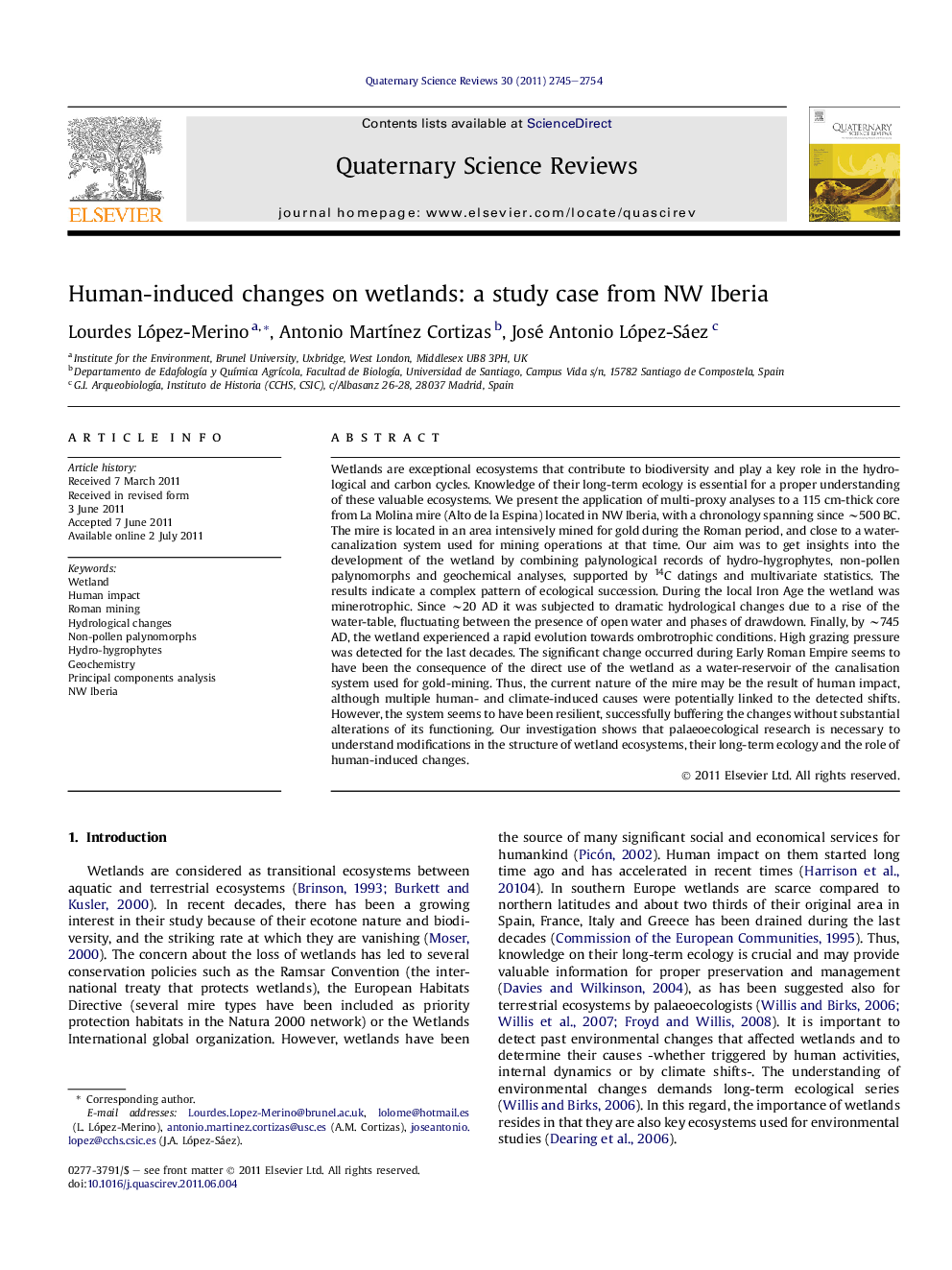| کد مقاله | کد نشریه | سال انتشار | مقاله انگلیسی | نسخه تمام متن |
|---|---|---|---|---|
| 4736727 | 1640908 | 2011 | 10 صفحه PDF | دانلود رایگان |

Wetlands are exceptional ecosystems that contribute to biodiversity and play a key role in the hydrological and carbon cycles. Knowledge of their long-term ecology is essential for a proper understanding of these valuable ecosystems. We present the application of multi-proxy analyses to a 115 cm-thick core from La Molina mire (Alto de la Espina) located in NW Iberia, with a chronology spanning since ∼500 BC. The mire is located in an area intensively mined for gold during the Roman period, and close to a water-canalization system used for mining operations at that time. Our aim was to get insights into the development of the wetland by combining palynological records of hydro-hygrophytes, non-pollen palynomorphs and geochemical analyses, supported by 14C datings and multivariate statistics. The results indicate a complex pattern of ecological succession. During the local Iron Age the wetland was minerotrophic. Since ∼20 AD it was subjected to dramatic hydrological changes due to a rise of the water-table, fluctuating between the presence of open water and phases of drawdown. Finally, by ∼745 AD, the wetland experienced a rapid evolution towards ombrotrophic conditions. High grazing pressure was detected for the last decades. The significant change occurred during Early Roman Empire seems to have been the consequence of the direct use of the wetland as a water-reservoir of the canalisation system used for gold-mining. Thus, the current nature of the mire may be the result of human impact, although multiple human- and climate-induced causes were potentially linked to the detected shifts. However, the system seems to have been resilient, successfully buffering the changes without substantial alterations of its functioning. Our investigation shows that palaeoecological research is necessary to understand modifications in the structure of wetland ecosystems, their long-term ecology and the role of human-induced changes.
► We performed a multi-proxy study of a peat core sampled in a mire from NW Spain.
► The mire is located in an area extensively exploited for gold in Roman times.
► Pollen and chemical records show dramatic changes linked to water table variations.
► The evolution of the mire seems to have been coupled to human transformations.
► Long-term ecological series are crucial for proper conservation plans of wetlands.
Journal: Quaternary Science Reviews - Volume 30, Issues 19–20, September 2011, Pages 2745–2754